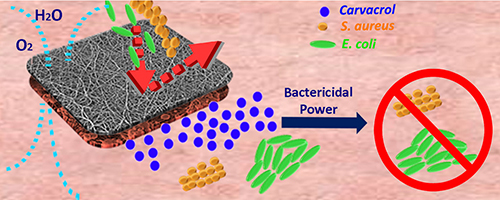Copyright © 2022 Foshan MBRT Nanofiberlabs Technology Co., Ltd All rights reserved.Site Map
To accomplish a rapid wound healing it is necessary to develop an asymmetric membrane with interconnected pores consisting of a top layer that prevents rapid dehydration of the wound and bacteria penetration and a sub-layer with high absorption capacity and bactericidal properties. Polycaprolactone (PCL)/polyvinyl acetate (PVAc) asymmetric membranes loaded with the bactericidal monoterpene carvacrol (CRV) were synthesized and characterized by scanning electron microscopy and Fourier transform infrared spectroscopy. Mechanical properties in dry and wet conditions and fluid handling behavior were also assessed. In addition, biological studies regarding their bactericidal effects, cytocompatibility and wound closure properties were also developed. Loading efficiencies of 40–50% were achieved in the prepared samples and 85–100% of the loaded CRV was released in simulated wound pH evolution medium. The significant inhibition of Gram negative (Escherichia coli S17) and Gram positive (Staphylococcus aureus ATCC 25923) bacteria growth clearly showed the suitability of the fabricated membranes for wound healing applications. Furthermore, cytocompatibility of the loaded membranes was demonstrated both in 2D and 3D human dermal fibroblast cultures, as well as cell migration was not impaired by released carvacrol from the membranes. These results highlight the potential of these polymeric electrospun membranes for wound healing.

Published:2021
Journal:Materials Science & Engineering C-Materials for Biological Applications
Impact Factor:5.880
Paper link:https://www.sciencedirect.com/science/article/abs/pii/S0928493118331114